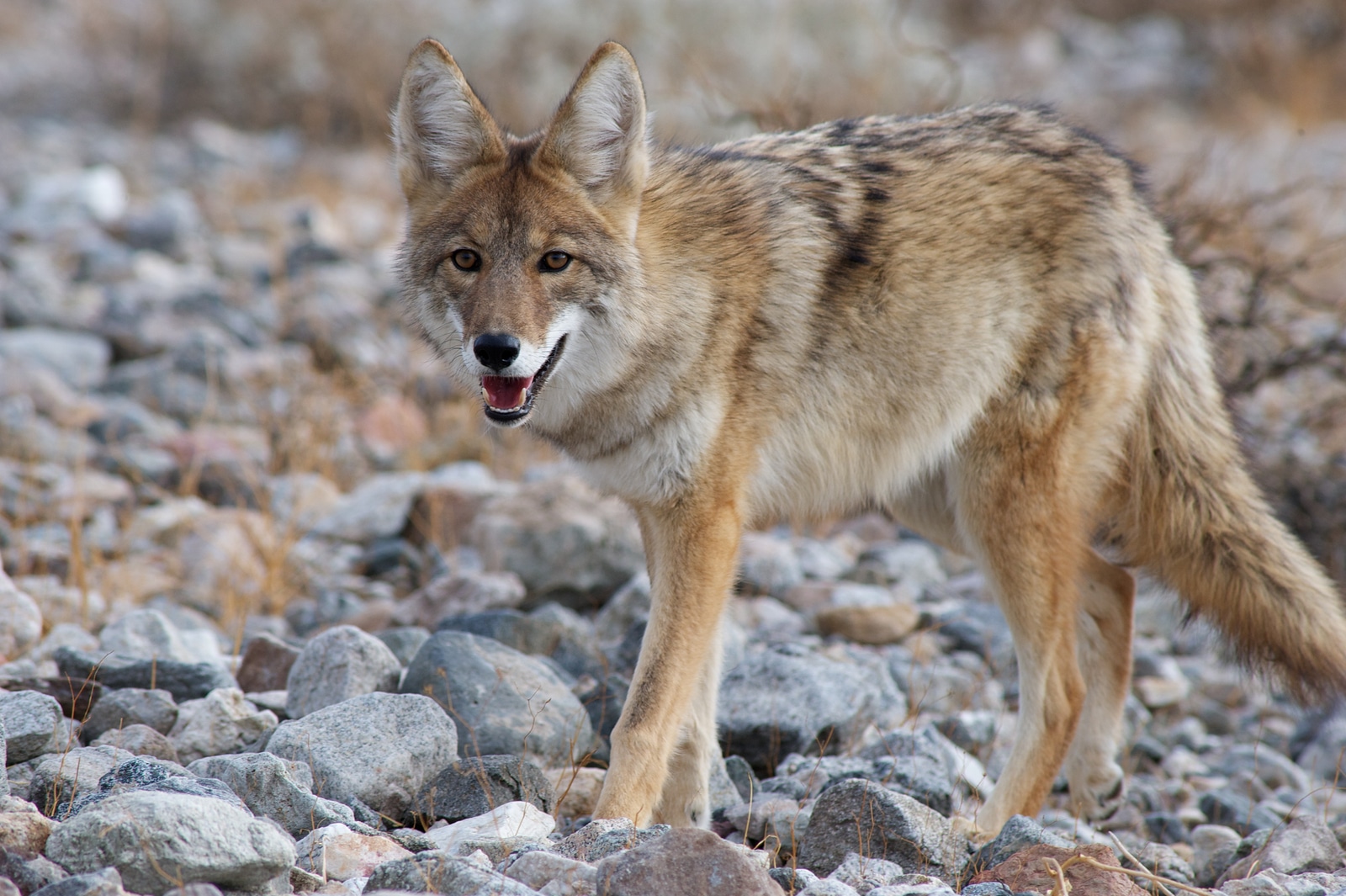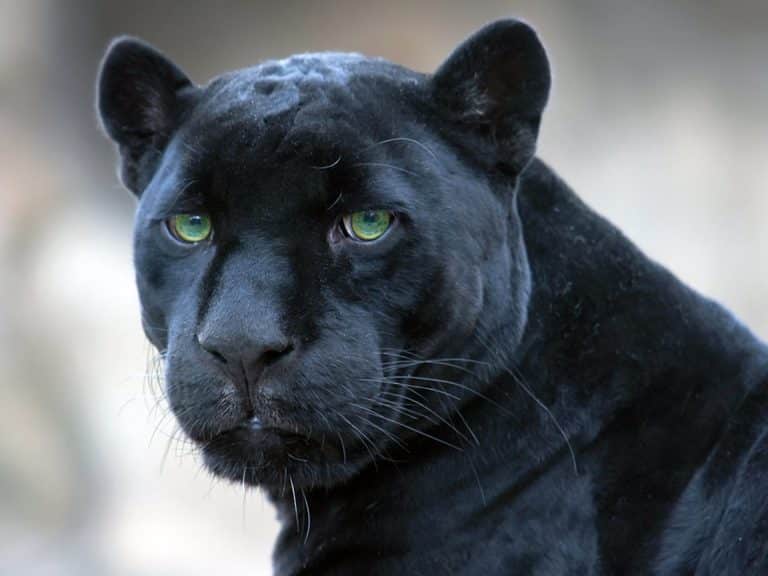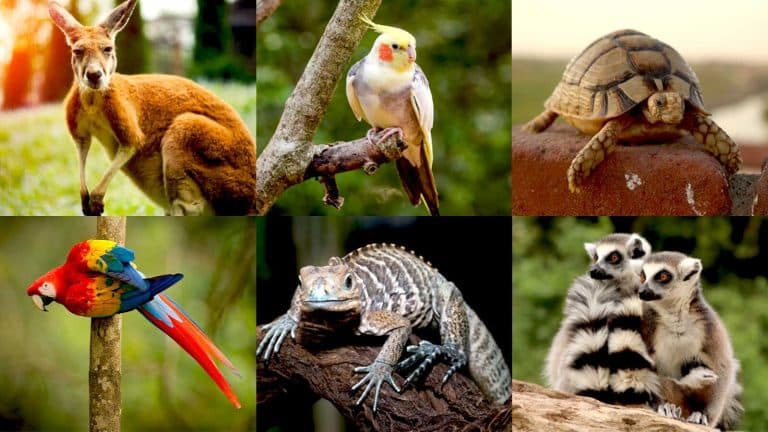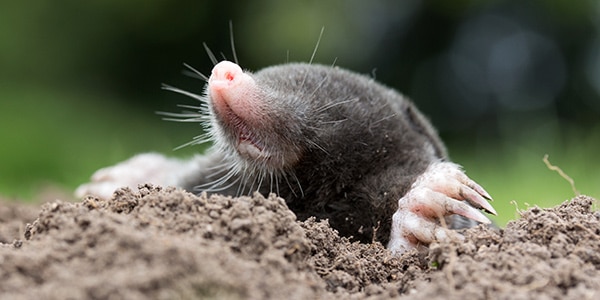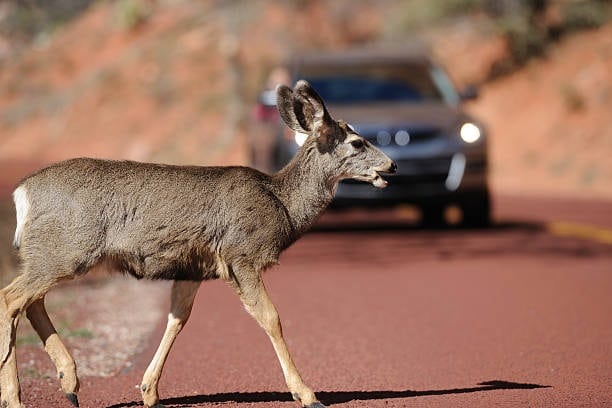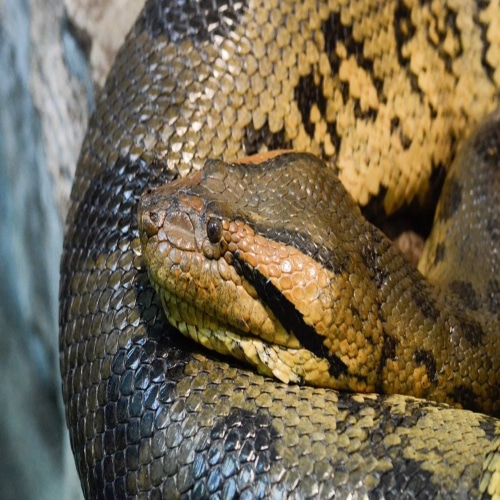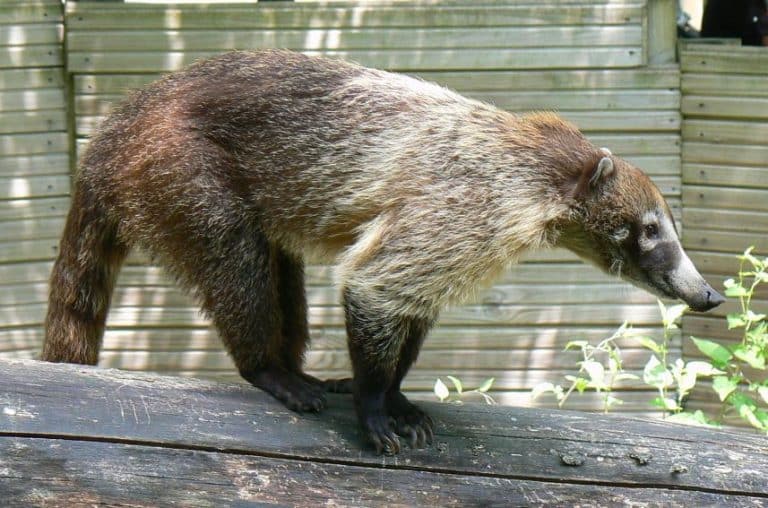Coyote’s Lifespan: All About the Coyotes Animal
Coyotes are a highly adaptable and versatile canid species native to North America. Their scientific name is Canis latrans. They can adapt to any environment, starting from deserts to grasslands and even swamps.
Their lifespan greatly depends on certain factors like habitat, diseases, access to food resources, and danger of being killed. They are found in different parts of the world and are distributed throughout North America. While they can live in the wild, they also adapt to city life.
Coyotes’ lifespan ranges from 6 to 8 years in the wild, which increases to 10 to 115 years when living in captivation. In this blog, you will find their habits, physical features, and some interesting facts. Wondering how long do coyotes live? Know about them in the details below.
Habitat of Coyotes
Coyotes are easily adaptable mammals that adjust to any climate, condition, and habitat. They are found in the United States, Canada, and Mexico, with different climatic conditions.
Following are a few common habitats where you can find coyotes:
1. Cities
Coyotes are somewhat shy when it comes to interacting with humans. They can make homes in small places and dig holes to live in places like existing raccoon burrows, the basements of broken houses, or under storage sheds.
2. Woods
They can live almost anywhere, and living in the woods is not that difficult for them. They keep a distance from wolves and bears. They get abundant food in the forests and house in the dens.
3. Suburbs
You will find coyotes also living in towns in rural or semi-rural areas. They can easily prey on pets and eat grains. They can be harmful to farmers as they can destroy their crops or kill their domestic animals.
4. Grasslands
Many wild animals stay in the grasslands, and coyotes are no different. They live with their family in the grasslands of North America. They are found in abundance in Yellowstone National Park.
5. Swamps
Coyotes are also found in the swamps that range from eastern to coastal North Carolina. Even though they live in the marshes, they try their best to avoid alligators.
6. Deserts
They are also found in the Arizona Sonoran Desert. They can even adapt to burning hot balls of sun, sand, and the cool breeze at night. They can live in caves, populated areas, small patches of green land, and even elevated peaks.
7. Tundra
Coyotes are very good swimmers as well. They are found in the vast, treeless, flat region of North America known as Tundra. You will also find them in the Arctic tundra.
Diet of Coyotes
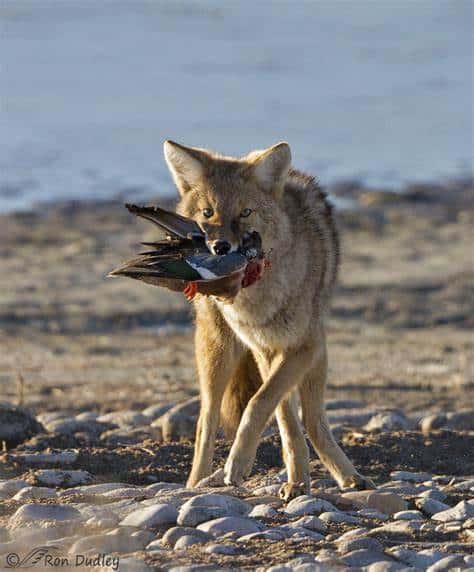
A coyote’s dietary habits vary depending on their adaptability, their current location, survival instincts, and many others. The lifespan of coyotes highly depends on the food they are taking. Their diet varies from animals to fruits; find details about it below:
1. Feeds on Small and Large Animals
Since coyotes are found in different climatic conditions, they can eat various animals. They eat lizards, snakes, turtles, toads, and many other amphibian creatures. Also, they feed on mammals like marmots, dogs, mice, rats, and squirrels. They can also hunt and eat deer, elks, wild sheep, lambs, and many other species of animals.
2. Catches Birds to Eat
They can feed on any species of birds that they find. If they get hold of a nest with eggs, they even eat it. They hunt sparrows, swans, and even pelicans.
3. Dependence on Scavenging Meat
They prefer eating fresh flesh, but when situations are unfavorable, they can also feed on the carcasses of other animals.
4. Depend on Plant-Based Food
Coyotes also feed on plants and plant products like apples, blackberries, watermelons, carrots, peaches, pears, and many more. They even consume some specific kinds of grass varieties.
Breeding of Coyotes
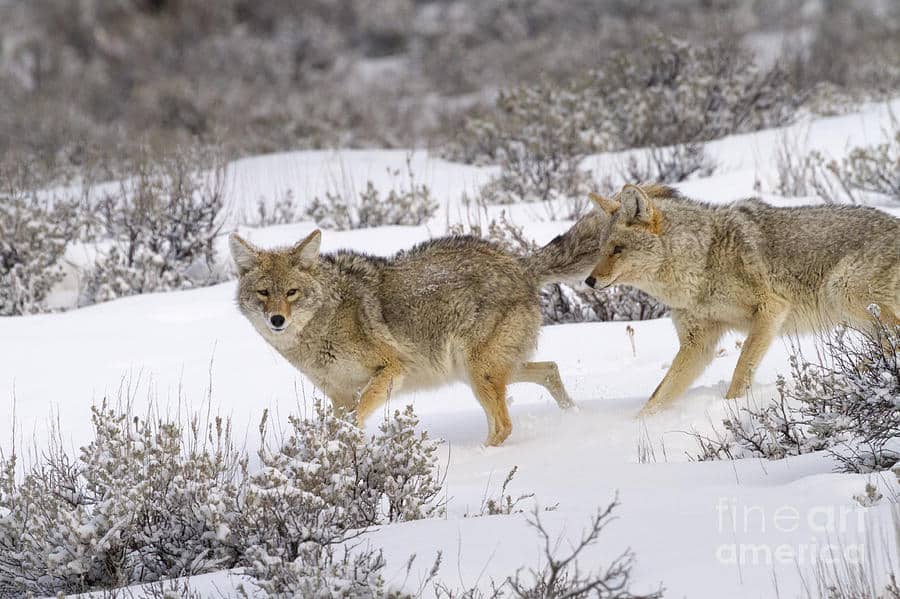
The breeding season for coyotes lasts for 4 weeks to 6 weeks. The peak is in late February and early March. The young coyotes first find a location in their territory. Their breeding season consists of – mating, pup raising, and dispersal.
A successful mate between coyotes is considered when they are locked or at least 20 minutes at a stretch. Coyotes do not leave other companies at all during the mating season. The male coyotes guard the female coyotes when they are in heat. Females can start mating at 2 years old, while males can start at 3.
Pregnant coyotes dig a den or find a shelter to give birth. At this stage, they do not want anyone to interfere, so the male coyotes guard them outside. A coyote mother can take a day to a week to come out of the den after giving birth, while male coyotes provide them with food.
Female coyotes’ pregnancy continues for 63 days before giving birth. They can give birth to three to four coyotes at a time. The newborns are first on lactation and then slowly start feeding on meat.
When coyotes grow old and start, they start hunting. They go in a group of three. Before Coyotes disperse, they strongly bond with their family and friends.
Life Expectancy of Coyotes
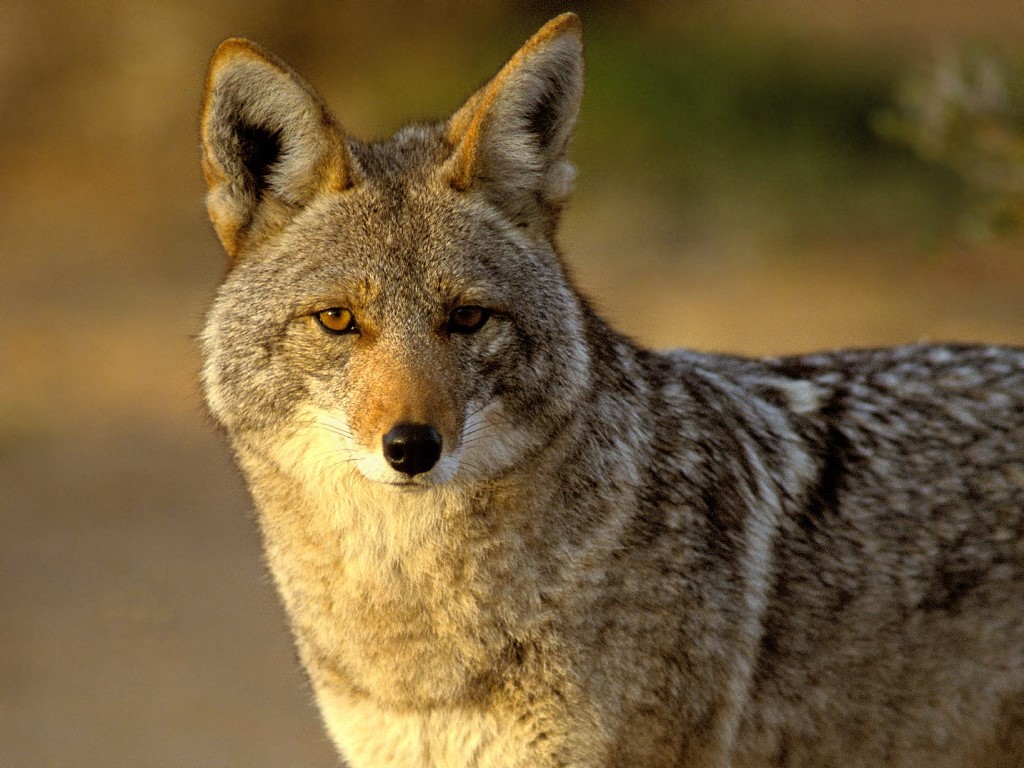
Coyotes are quite adaptable, and those who cross the first year of their age can live for three to 5 more years. But this lifespan depends on many factors like illness, being killed by predators, or availability of food and water.
Unlike wild coyotes, the ones that are safe from threats can live up to 10 to 14 years of age. Some have even lived up to 20 years. Understanding coyotes’ challenges and adaptations is important so we can help them live a better life.
Certain factors determine the lifespan of Coyotes:
1. Food
They can eat almost anything they get; they feed on animals, birds, and plants and even scavenge meat. Not getting enough food can cause malnutrition, which can thus hinder their growth.
2. Genetics
The impact of genes is very low in the lifespan of a coyote. They are not made from complete breeding, because of which their chance of living is greater than that of a dog.
3. Human Activity
Coyotes can have a tough time leading their life in peace due to the intervention of humans, fragmentation, road accidents, poisoning, and much more. This can affect their lifespan greatly.
4. Habitat
The quality of the habitat that coyotes are living in plays an essential role in determining their lifespan. They need shelter, water resources, and enough prey to consume.
Physical Characteristics of Coyotes
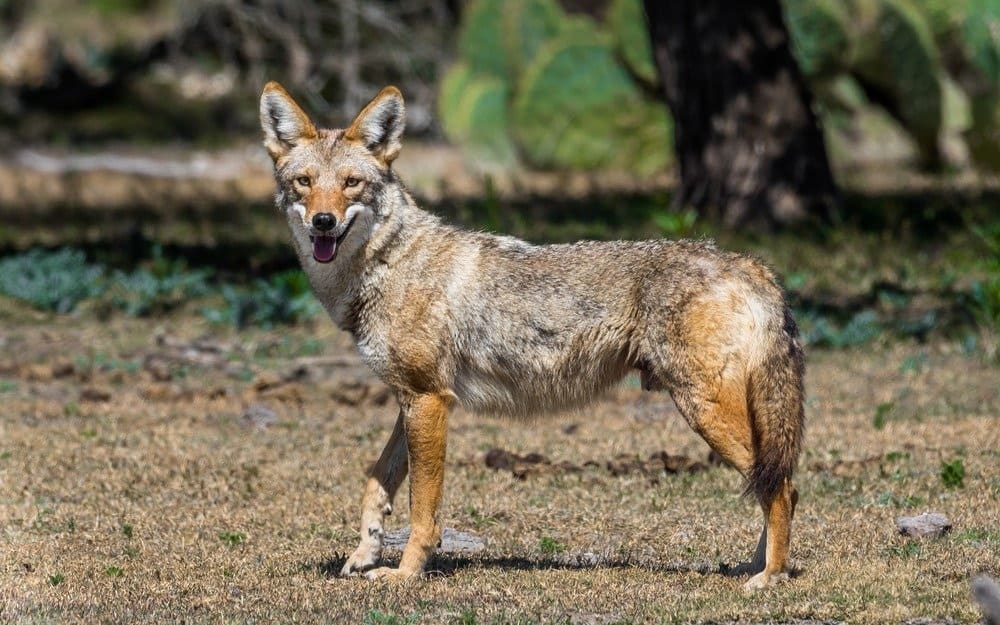
Coyotes have distinctive traits that set them apart from the rest. Find out more details about their weight, height, color patterns, and much more:
1. Size and Weight: Coyotes can measure 32 inches to 37 inches in length and weigh anything between 20 pounds to 50 pounds. They are known for being highly versatile.
2. Fur and color pattern: Their fur color ranges from brown, grey, and reddish tones. They get insulation from cold winters because of their fur.
3. Face features: Coyotes have black noses, yellow eyes, long bushy tails, narrow muzzles, and large triangular-shaped ears at the top of their head. They run with their tail down, differentiating them from a dog and a wolf.
List of Some Interesting Facts About Coyotes
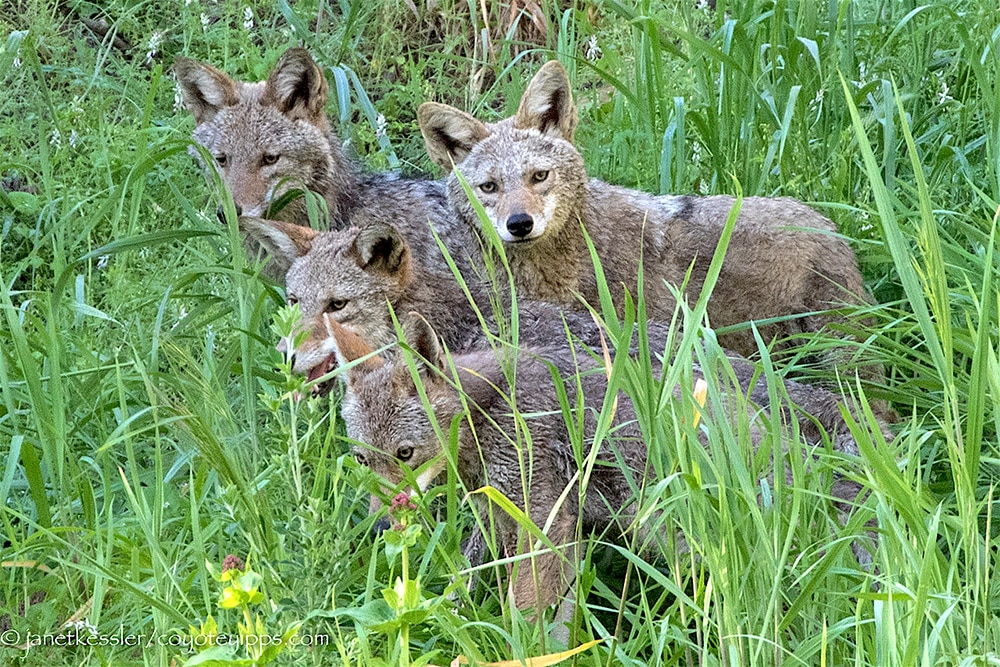
There are numerous facts about coyotes that you might not know. Explore them here:
- Coyotes can see well at night. Their night vision is quite powerful due to the many rod receptors in their eyes. They also have a mirror beneath the retina, which reflects the observed light twice. This helps them to see even in low light.
- They avoid spicy or strong smells. While this animal can feed on almost anything, there are some exceptions. Coyotes refrain from eating chilies or mint as they are spicy and have a strong smell, respectively.
- Coyotes roll over their killed prey. Even though the exact reason or psychology behind this is not studied that deeply, it is believed that they do this to mark their scent on the kill. This way, any other animal would know that it belongs to them and won’t dare to steal it.
- The largest coyote to date was 75 pounds, much more than the 20 to 30 pounds weight mark estimated for them. Also, its height was around 4 feet 11 inches.
- While coyotes can easily climb fences, they can’t climb on trees. The reason is that they cannot jump very high but are comfortable climbing fences. Their toe grip isn’t that good.
- Coyotes are so adaptive that they can even mate with dogs and wolves. Their offspring are viable. It is because of this that red wolves became extinct as they were mating with coyotes for survival.
- For coyotes, sound is not just a mere way of making noise but also to communicate. Every sound has a particular purpose, like how they howl to warn outsiders or other pack members while barks and tips are used to attract the members’ attention.
- Coyotes do not dig their den. Rather, they prefer using natural shelters. They make use of caves, under bushes, or hollow logs. They even make homes in dens that other animals abandon.
- Coyotes are highly prone to being affected by diseases. Rabies, distemper, and hepatitis are some to name. They are easily affected by parasitic infections and fluke infections.
- Coyotes can walk and stand on their toes. How amazing a fact this is! They do this to avoid any attention from the surroundings.
- Coyotes are great swimmers. They use this skill only when they want to escape humans or predators. They also swim short or medium distances while searching for a new territory.
- Attacking and feeding on porcupines seems like an impossible job. But it is not the same case with coyotes. They attack these creatures in groups where one tries to flip the porcupine, and the other pounces.
- Coyotes greatly help in pest control as they attack rodents, mice, groundhogs, and even snakes at times.
- Coyotes prove themselves to be loyal mates. Once they find their mating partner, they stick to them for life, irrespective of meeting any potential mate. When the male coyote dies, the female leaves the place when their pups become independent.
- They can make 11 different noises like huff, woof, lone howl, bark howl, and many more. One coyote can sound like they are in a group due to so many vocalizations.
- Coyotes are great runners and can run up to 43 mph.
- The most amusing thing is they can control how many pups are born in a particular litter.
- In total, there are 19 subspecies of coyotes living in different states of North America except for Hawaii.
- A coyote’s fur texture and color depend on the place it is living in. When living in colder areas, their fur color is light grey with dark patches.
- They raise their babies as a unit and do not let them go away until they are completely independent.
How Can You Avoid Conflicts with Coyotes?
Although coyotes live in the cities around humans, they can sometimes be aggressive. It would be best if you took care of your children and pets at all times. Following are some ways you can avoid any attack from their side:
1. Avoid Feeding Coyotes
Coyotes should never be fed in the residential neighborhood as this can remove fear of humans. They can then start testing humans as their prey. Leaving food outside unintentionally can also be a problem. You should immediately report to the authorities if you see them around. Moreover, compost piles and trash bins should be removed to avoid coyote attacks.
2. Don’t Let Your Pet Roam Around Outside
If you know that coyotes are around, do not let your pets roam around freely. Get electric fences around your house so that coyotes do not get a chance to enter and attack your pets. Make sure you are keeping your feral cats and domestic cats inside and have them neutered to avoid any mating.
3. Refrain from Running on Seeing a Coyote
When you see a coyote approaching you, or you encounter them normally, make sure you do not run away. They don’t like being shouted at, so they yell and throw things at them. Never play the victim in front of them. This can give them a sign of your defeat, and they can attack you severely.
4. Report Immediately if You See an Aggressive Coyote
When you see an aggressive coyote around, report them to the concerned official. Their signs of aggression are similar to that of dogs. When they bark in an annoyed way, even when not provoked, raise hackles, growls, and lunges, they can prove harmful.
Social and Reproductive Behaviors
Coyotes have a complicated social structure where their family is known as a pack. In these packs, there is a dominant alpha pair that leads the rest of the members of the group. They talk to the other members using howls, barks, and yips.
Coyotes have breeding seasons when they build and defend their territories. The mating season lasts for three months, that is, January to March. This is followed by a gestation period of two months when the females give birth to pups.
Before they explore the world independently, their parents teach them important skills.
Conclusion
The lifespan of a coyote depends on the coexistence of wildlife. Various factors highly influence it. They help maintain ecological balance by preying on smaller animals and preventing disease outbreaks.
They highlight the resilience of wildlife in adapting to urban environments and showcase the aptitude to survive. Education and awareness are the only ways to strike the correct balance between coyotes and humans.
Knowing about coyotes in detail and their way of life can help human beings to coexist peacefully with them. Find out above some ways you should keep in mind to avoid any fights with them and help them live their life longer.
Frequently Asked Questions
Do Coyotes Live Long in The Wild or Captivity?
Coyotes, when living in captivity, can reach a lifespan of 15 years or more. When living in the wild, they have many life risks like predators, untreated diseases, and constant food.
What Do Coyotes Eat and How Does It Impact Their Lifespan?
Their diet includes a variety of food from small mammals, birds, insects, plants, carrion, and much more. Their balanced and nutritious diet helps them live longer.
What is the Reproductive Rate of Coyotes?
Coyotes have a high reproductive rate. When two healthy coyotes mate, they can produce healthy babies every year. This way, they can maintain their population easily.
What are the Main Reasons for The Death of Coyotes in The Wild?
Coyotes can die due to many reasons. Some common factors are various diseases, accidents, fights with other coyotes, and being hunted by larger predators. They have a life risk in both the wild and in the city.

